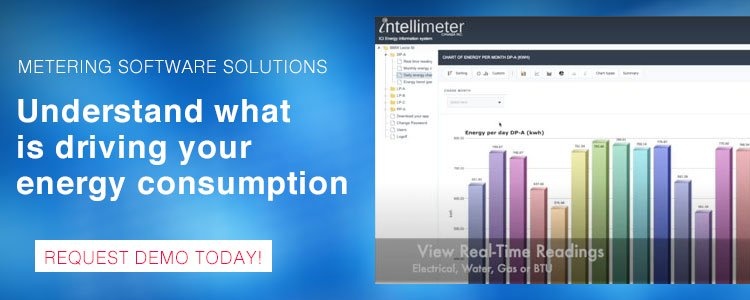Submetering offers timely and detailed measurement capabilities that allow efficient resource management of water and energy. Submetering data and adequate frequency help with conservation efforts and save costs, not just on the bill, also on major infrastructure upgrades. Let us look at how collecting data and planned measurement intervals create efficiency and saving opportunities.
Submetering Data
Submetering data collected can be used to:
• Identify periods of peak consumption and eliminate or reduce Demand Charges in Electricity Bills• Identify abnormal consumption during periods when no consumption is expected, to reduce high water or gas bills.
• Set the benchmark for the building’s energy use
• Verification of the energy being used before and after implementing a project
• Identify where energy usage can be improved
• Identify retrofit opportunities through trends and data variability
• Create reports and energy budgets
• Determine proper allocation of costs (coincidental Demand)
• Calculate load shedding or demand response
• Select accurate utility rate structure
• Verify utility bills per building floor or units
Frequency Planning
When customers purchase Electrical Energy in bulk, their energy bill typically has two components; Energy and Demand charges. Demand, which is measured in KW (power) represents the intensity of the consumption of energy. Utilities apply this charge in the rates because the higher the demand the more installed capacity they need to service their customers. (we will address demand in a future blog)
Submeters can help to understand usage of electrical loads in real-time when energy is actually being used. Using submeters to track the individual power consumption in the same time intervals as the utility (Typically 15 minutes) allows the owner to identify the periods of high consumption and the individual services that contribute to that consumption.
Once the circuit or circuits that consume the most and the periods when that happens are identified; the owner or manager can plan for a demand shift so that once implemented it can reduce the demand charges.
Regular measurements at planned intervals provide insightful data for scheduling machinery and equipment starting times, or load shedding services in a building at specific times during the day to reduce the contribution to demand are positive strategies that lead to cost reduction in the energy bill.
Submeters are installed not just for billing purposes but also for determining the amount of energy used by the building. These readings can be made using the same intervals used by the utility and used to identify issues daily, weekly, or monthly.
Overall, an adequate reading frequency planning that captures all the relevant data, benefits the end-users by supporting better decisions in their consumption.


